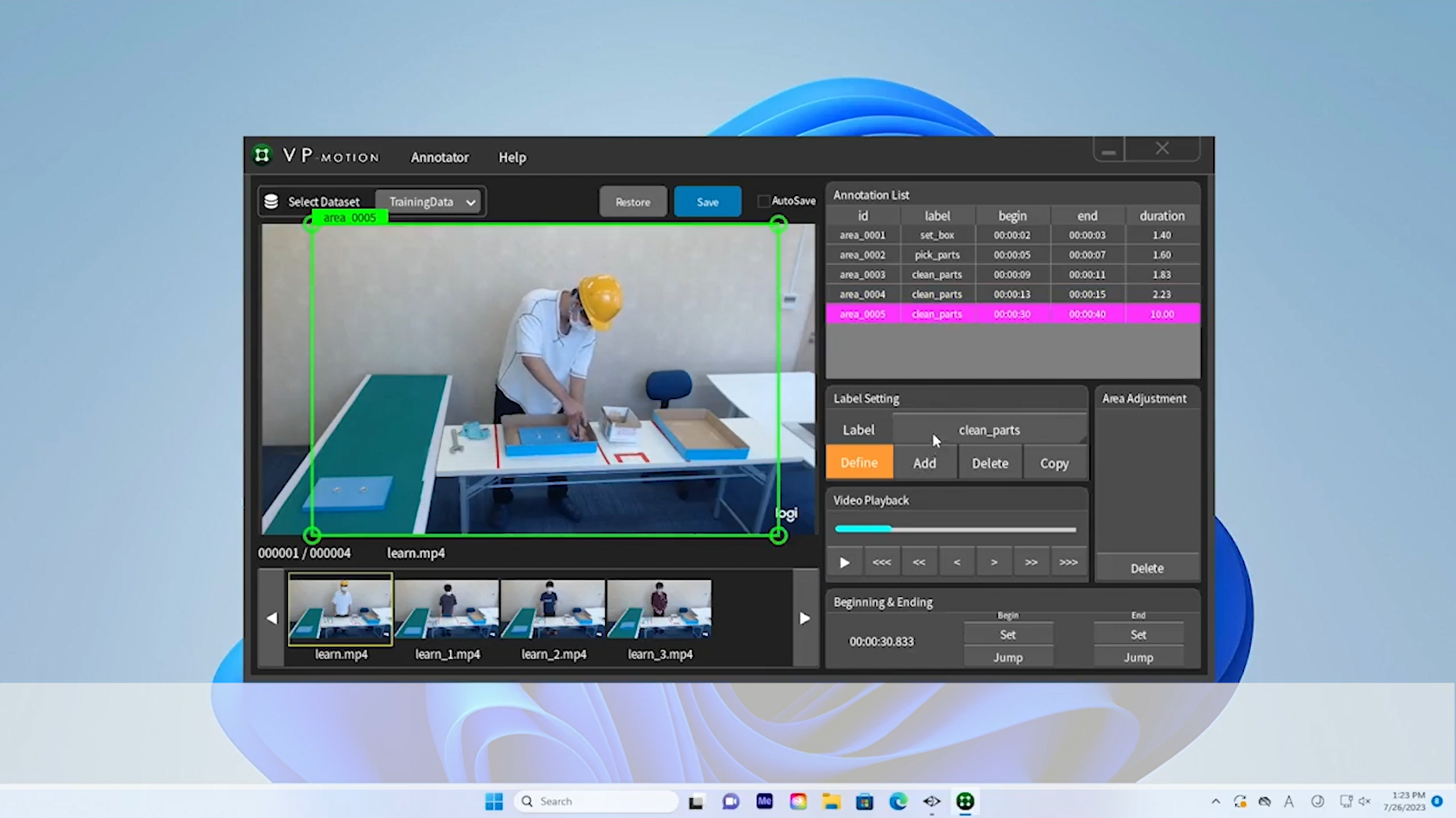VP-Motion Annotator Tutorial released

VP-Motion requires annotation to start recognizing behavior, but what exactly is an ‘annotation’ and how do you make one? That is someting we will be addressing in this article.
What is an ‘annotation’?
An annotation is a way for you, the user, to tell your computer that a certain action has a certain ‘label’ attached to it. A label in this case is just adding a name to an action. Let’s say that you are teaching VP-Motion to recognize what a ‘fall’ is. Of course for us humans, it is extremely obvious what a fall is, but a computer has to ‘learn’ this.
By opening VP-Motion and importing videos, you can start labeling actions. By specifying the time that an action occurs, and drawing a square (known as a ‘bounding box’) around the action, you are telling the computer what it should look out for and ‘learn’. By adding multiple of these bounding boxes with labels, you are performing annotation and making your computer better at guessing exactly what it is that you want the computer to recognize. Below is a chain of posts we made on X to further explain the concept of machine learning.
Ever since the advent of #AI, the term #machinelearning has become a mainstay of the English language. Here at NEXT-SYSTEM, we frequently use the term as well. But what does it mean? That’s something that we will be clarifying in this 🧵 Read on down below. pic.twitter.com/CnsDG3G1Qv
— NEXT-SYSTEM (@nextsystem_intl) March 11, 2024
How do I do it?
To get started on annotating with VP-Motion, all you have to do is follow this tutorial and you are all set!
